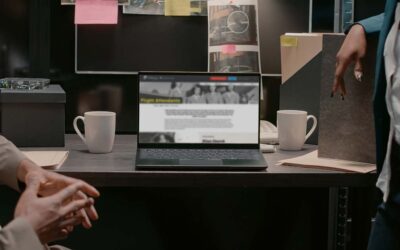How to Test, Vet, and Purchase a New Museum CMS

Rachael Cristine Woody
If you’re this far along in the procurement process, you’ve already formed your procurement team and the team has identified new collections management system (CMS) specifications. The next step in the procurement process is to take the highest ranked museum CMS options (based on the specifications rubric) and begin the process of testing and vetting.
Testing
It’s important to test museum CMS capabilities and workflow options to ensure the tools work the way staff expect them to. Request a temporary sandbox from CMS vendors to test workflows, customization, and other facets of the CMS that are important to staff. If a sandbox can’t be provided, request a detailed tutorial that addresses procurement team requirements. Make sure to test each specification you’ve listed as required or highly important as it can be easy to make the mistake of assuming the CMS will work a certain way. Finally, it’s important for each procurement team member to spend time testing their area of the CMS to ensure it works for their requirements.
Testing Steps:
- Request a sandbox to test tools
- If a sandbox can’t be provided ask for a tutorial or demonstration
- Have each procurement team member test their area of the CMS
Vetting
If CMS testing goes successfully it’s time to ask the museum CMS vendor any remaining questions the procurement team may have. This is a good time to clarify if anything is missing from the vendor’s proposal and outline what the next steps will be. It’s important to remember that the CMS company is a potential partner and this is an interview. Finally, just as the museum would do if they were hiring a new staff member, verify references for the CMS company. Peer referrals are the strongest as they will increase the procurement team’s awareness of potential CMS advantages or pitfalls that were not evident during the research and testing phases. When seeking referrals, be sure to ask the referring museum more than just “Does the CMS meet your requirements?”. Ask for a quick demonstration of which tools they love using and/or which areas lack robust tools. A great question you should always include is “What were your lessons learned from adopting and using this CMS?”.
Vetting Steps:
- Ask the CMS vendor any remaining questions
- Call references
Budgeting and Purchasing
Once a CMS has been selected, the procurement team—along with any legal and operations staff—should review the CMS contract to ensure it meets specifications and is determined to be a suitable contract for the museum to enter into. Payment terms for the CMS should be outlined in the contract and should be processed and scheduled as appropriate in order to guarantee prompt payment and an accurate museum budget. If the CMS company is one that increases annual fees (at regular or irregular intervals) make sure the increase is spelled out in the contract so there are no financially damaging surprises. For example: “CMS Company” has an annual increase of 2%. Or: “CMS Company” reserves the right to increase its fee not-to-exceed 5% upon renewal of the agreement.
Budgeting and Purchasing Steps:
- Review contract with legal and operations staff
- Make sure payments terms are clearly defined
- Relay payment amount and timeline to budgeting office
The museum CMS is critical to its daily operations. As such, it’s imperative for museum staff to get the CMS procurement process right. The more thoughtful you can be when choosing the museum’s CMS, the less likely it is that the museum will have to navigate a subsequent procurement and replacement process. Including the right stakeholders on the procurement team, teasing out and prioritizing CMS specifications, and exercising due diligence through testing and vetting are all required elements for the successful selection of a museum CMS.

Rachael Cristine Woody
Consultant, author, and blogger Rachael Cristine Woody advises on museum strategies, collections management and grant writing for a wide variety of clients. Learn about Lucidea’s Argus solution for museum collections management and digitization and read more of Rachael’s blog posts here.
Similar Posts
An Introduction to Scrollytelling for Museums
Discover how museums use scrollytelling and digital storytelling platforms to create immersive narratives. This introduction explores key concepts and approaches to interactive storytelling.
Exploring Self-Determinate Multiple Pathways: An Example of Digital Storytelling
Discover how self-determinate multiple pathways offer flexible interactive storytelling in museum exhibits. Learn from the Tenement Museum’s ‘Your Story Our Story.’
Digital Museum Storytelling Example: A Look at Self-Determinate Linear Pathways
Self-determinate characteristics on a linear pathway go beyond brief sidebar topics and instead offer alternative ways to navigate the linear pathway.
Digital Storytelling in Museums: The Prescriptive Linear Pathway in Action
Rachael Woody emphasizes that storytelling is key to engaging audiences with collections. One effective approach? The prescriptive linear pathway—a simple yet powerful method for guiding visitors through digital exhibits.






Leave a Comment
Comments are reviewed and must adhere to our comments policy.
0 Comments